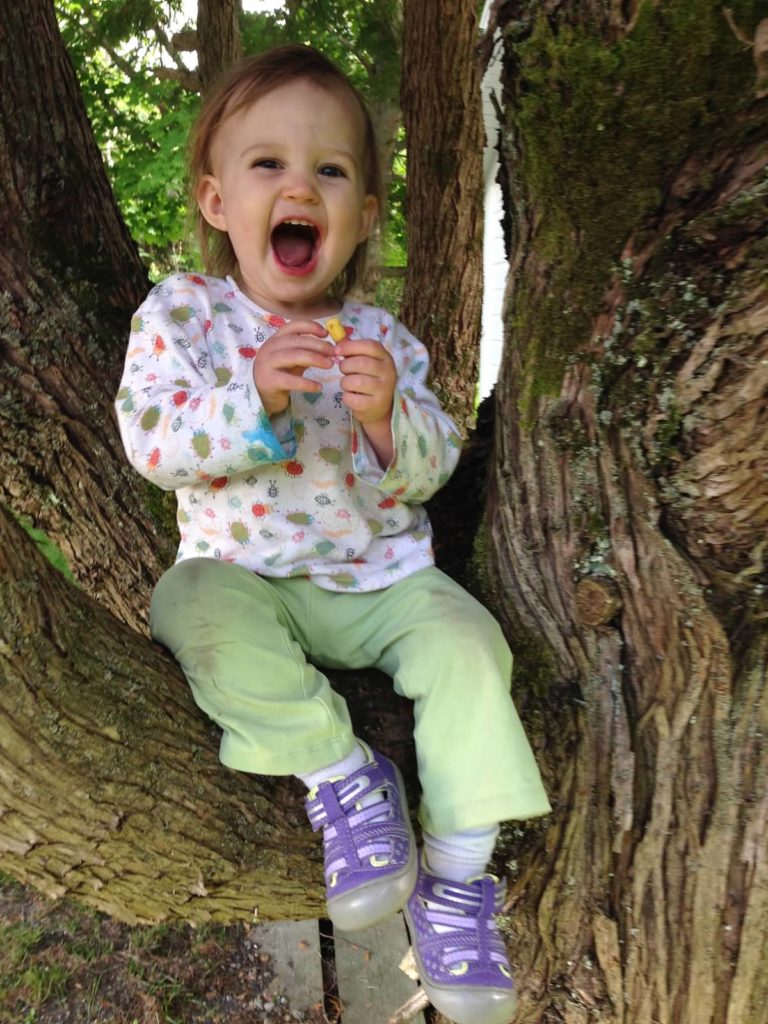Thinking about trees often makes you think about your grandchildren. Both start small, can live for many decades, and will grow old in a world very different from ours today. And they’re connected. I expect that my granddaughter Esme, who just turned 1 ½, will probably live in a house made of wood, will write on paper, and perhaps will keep her house warm in the winter, as my wife and I do, with a wood stove. Have we thought about what trees that wood will come from?

Wooden pallets carrying cardboard boxes full of products we’ll eventually buy – two of the unseen uses of wood in modern society. Photo: iStockphoto/Baloncici
This week at the Society of American Foresters/International Union of Forest Research Organizations meeting in Salt Lake City, UCS is releasing a report by Pipa Elias and me called Planting for the Future. It tells how humanity uses products made of wood, how that use will change over the next half-century, and what kinds of forests could supply the trees that we’ll need. It tells how our grandchildren can have a more sustainable relationship with the earth’s forests than my generation, using the miraculous ability of trees to grow tall and strong for many decades, and to produce the seeds that start the whole process over again.
The report shows that although we think we know how we use wood, much of it is actually hidden from view. It’s behind the walls of our homes, in the frames used to pour the concrete foundations of the buildings where we work, in the cardboard boxes that deliver our presents, and in the pallets on which our food is transported to the grocery store. Thus, to understand future demand for wood, and the pressure that it will put on forests, we can’t just project what we think is happening with the tree-based things we see every day – our furniture, our books and our newspapers. We need to look at the demand for all sorts of different kinds of products, which come from different kinds of trees and thus different kinds of forests.
To forecast the demand for wood products in the year 2060, we used the Global Forest Products Model developed by Joseph Buongiorno and colleagues at the University of Wisconsin. We found that the major use of wood globally—for fuel—is expected to decline by 23% over the next half-century, as it is replaced by “modern” sources of energy. Solid wood products of all kinds—housing, furniture, panels, plywood and more—are projected to grow appreciably, but the dramatic boom in demand, more than doubling by 2060, will be in pulp and paper products.

Researchers examine a fast-wood acacia plantation in Viet Nam. Photo: Flickr/ACIAR
This may be surprising, given all we hear about the decline of newspapers and books and the growth of recycling, but in fact these are minor components of both the current and the future demand. Those “hidden” products, like the cardboard used to deliver all the things we order from Amazon, will be far more important in determining the fate of the Amazon—the real one, not the company—than what happens to the ex-trees edition of the Washington Post.
An increasingly important way to produce these products will be “fast wood” plantations, which grow wood at ten times the rate of natural forests. Often we don’t like the idea of creating such “industrial monocultures”, but if the alternative is clearing primary forests, perhaps we should consider ways to make plantations more socially and ecologically sustainable, rather than discarding the idea of tree-planting entirely. The report shows that there are many ways to do this, and in much better ways than is currently the case. These include community forestry, using mixtures of native tree species instead of monocultures of introduced ones, and valuing ecosystem services like biodiversity and carbon sequestration in addition to wood production.

Rainforest in Indonesia, cleared to replace it with plantations – the epitome of senseless land management. Photo: Rainforest Action Network/Flickr
And above all, we need to stop cutting natural forests to replace them with plantations, which is not only ecologically senseless but also unnecessary, given the large amount of cleared land in the world that would benefit from reforestation.
I won’t be around to see the forests of 2060, but I expect that my granddaughter will. Indeed, according to recent data, she may well live to see the twenty-second century. Today is when we need to plant the trees that she and her generation can use as they grow old, while also enjoying the forests that we saved for them today.

My granddaughter Esme in a tree. Both could still be alive in the 22nd century.
